Apple HomePod mini review
Apple HomePod mini: Specs
Size: 3.9 inches (diameter), 3.3 inches tall
Weight: 0.76 pounds
Wireless: 802.11n Wi-Fi, Bluetooth 5.0, Thread
Maybe — and I’m just spitballing here — people are more likely to buy a $99 smart speaker rather than one that costs $299. But there’s more to the Apple HomePod mini than just its price. This small spherical speaker aims to compete with the Amazon Echo, but in a package the size of the Echo Dot.
And for the size, there’s no better-sounding smart speaker than the HomePod mini. But there’s more to a smart speaker than just its audio. In this Apple HomePod mini review, we’ll examine how well Siri and HomeKit performs, and how it stacks up to the best smart speakers you can buy.
Apple HomePod mini review: What I like
Small size: At just 3.9 inches in diameter, it’s the same size as the Amazon Echo Dot, so you can stick it just about anywhere.
Great sound: Despite its small size, the Mini sounded better than the much larger Amazon Echo.
iPhone integration: If you’re playing music on your iPhone, you can simply tap it to the HomePod mini to keep the music playing on the speaker. You can also use the mini to make calls, send messages and more using Apple’s Handoff feature.
HomeKit hub: The HomePod mini can act as a smart home hub for Apple’s HomeKit, letting you control all sorts of devices.
The price is right: At just $99, the HomePod mini is much more affordable than the $299 HomePod.
Apple HomePod mini: What I don’t like
Streaming music support: Yes, you can use Airplay to beam music from Spotify and other services to the HomePod mini, but it should have native support for Spotify and others.
Siri: While Siri has made improvements, it still lags behind Alexa and Google Assistant.
No mic off switch: I wish there was a physical switch to turn off the HomePod mini’s microphones. Apple’s products may be more secure, but I prefer a mechanical, rather than a software-based solution.
Apple HomePod mini: Price and availability
The Apple HomePod mini has been available for purchase since November 6. It costs $99, and comes in white and space gray.
Apple HomePod mini: Design
The Apple HomePod mini is about the size of, well, a large apple. Measuring 3.9 inches in diameter, it’s almost exactly the same size as the 4th-gen Amazon Echo Dot, but smaller than the 5.7-inch diameter Amazon Echo and much smaller than the original HomePod. Like Amazon’s devices, the HomePod mini’s circular design is meant to attract attention — but not too much.
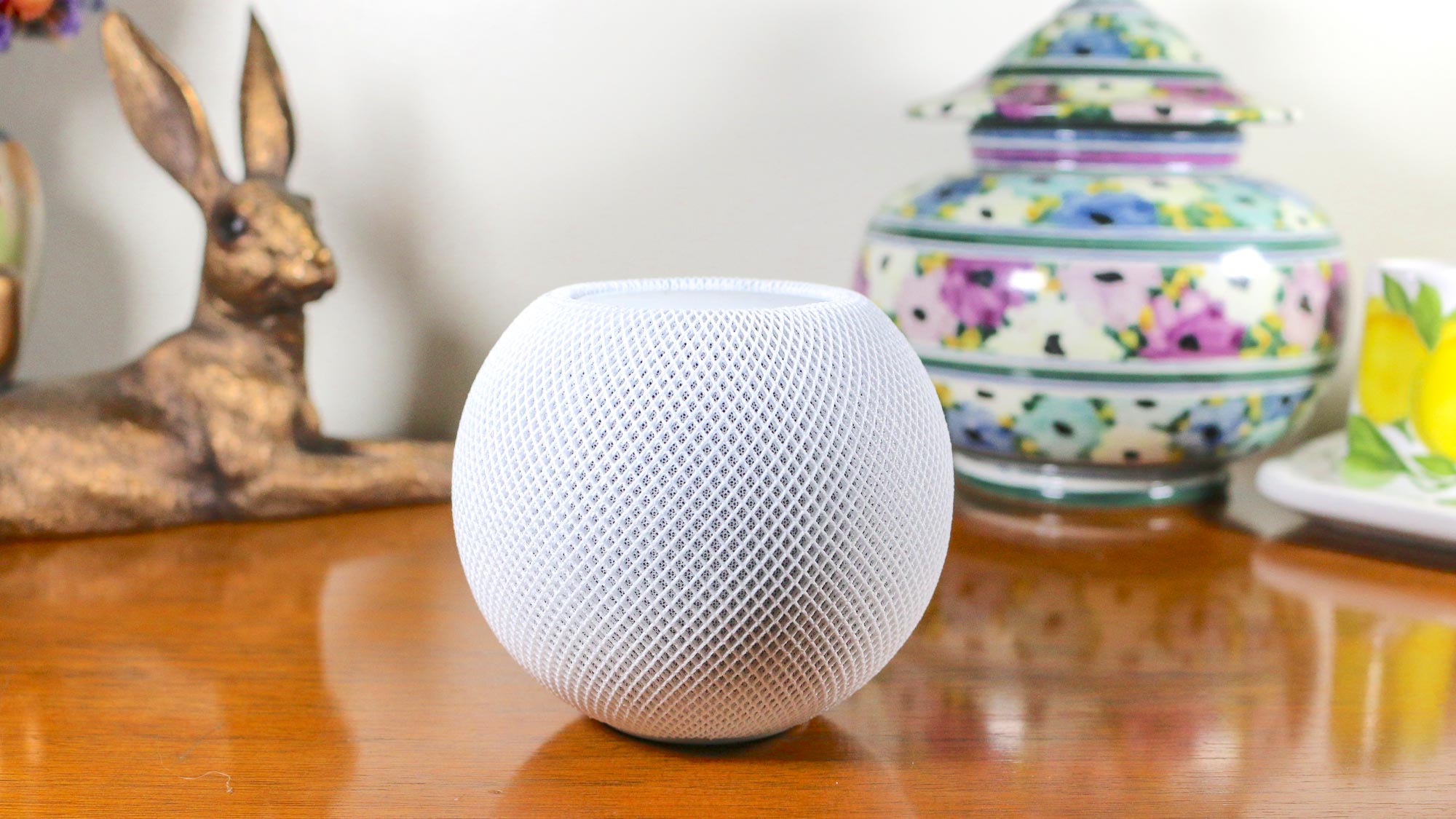
The acoustic fabric covering on the HomePod mini, along with its flat top, reminds me of those candles you’d find at an old-school Italian restaurant with red-checkered tablecloths. Still, I like that the fabric wraps almost entirely around the speaker; on Amazon’s devices, the fabric covers only about half the speaker, which diminishes the overall look.
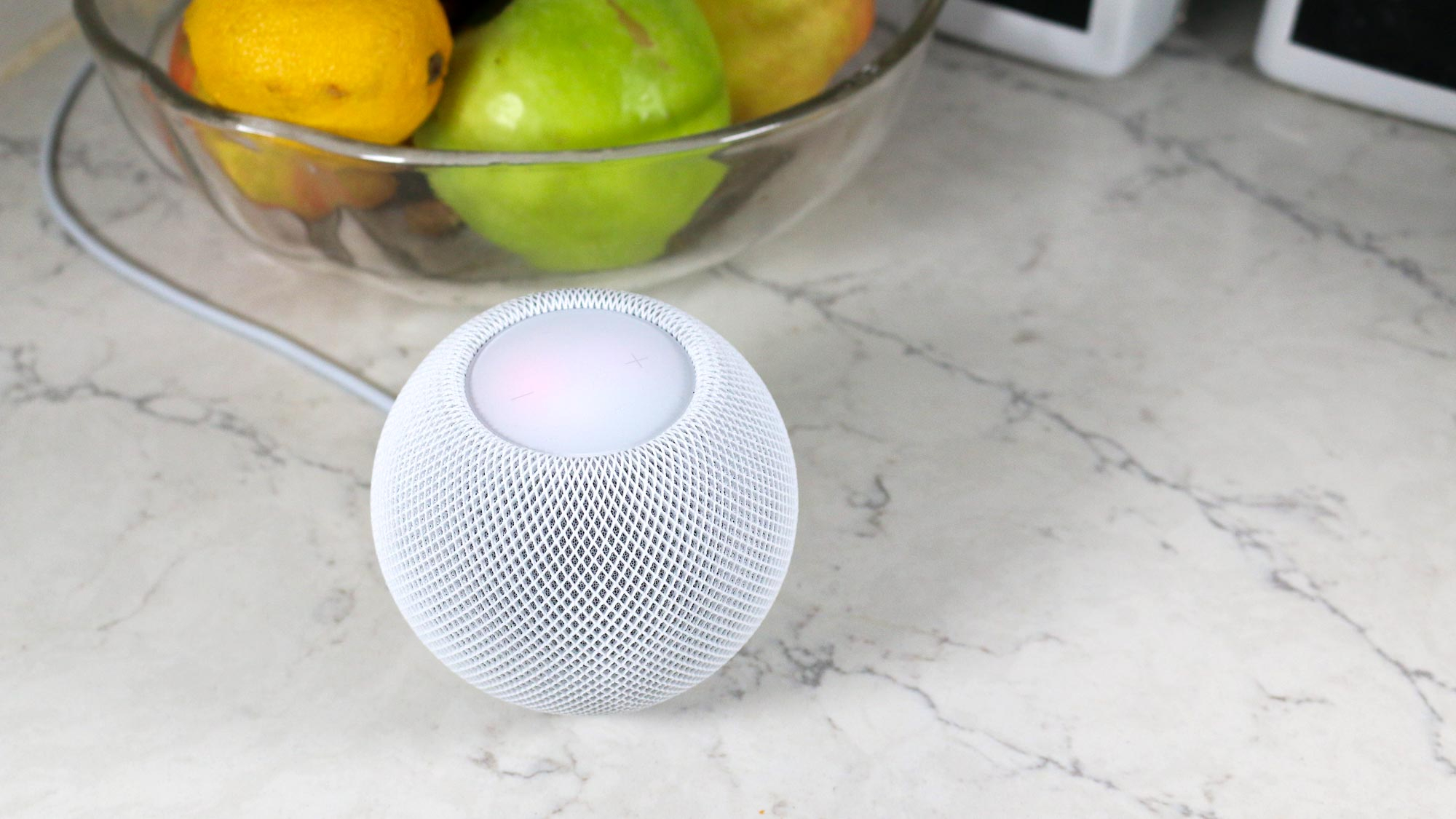
Like the full size HomePod, there’s a translucent touch panel at the top to control volume and activate Siri. When Siri is active, this panel glows in a multitude of colors, which is a neat effect, and one I wish you could control. Given that it also looks like a magic 8-ball, I wish I could pick it up and shake it to reveal my fortune. Tapping the top of the HomePod also lets you play/pause your music, skip or go back, and summon Siri.
Unlike other smart speakers, there’s no physical button to turn off the mini’s microphones. While Apple has stringent privacy policies — all Siri requests use a random identifier, for example — I’d like the reassurance of an actual switch, as can be found on the Amazon Echo and Google Nest Audio.
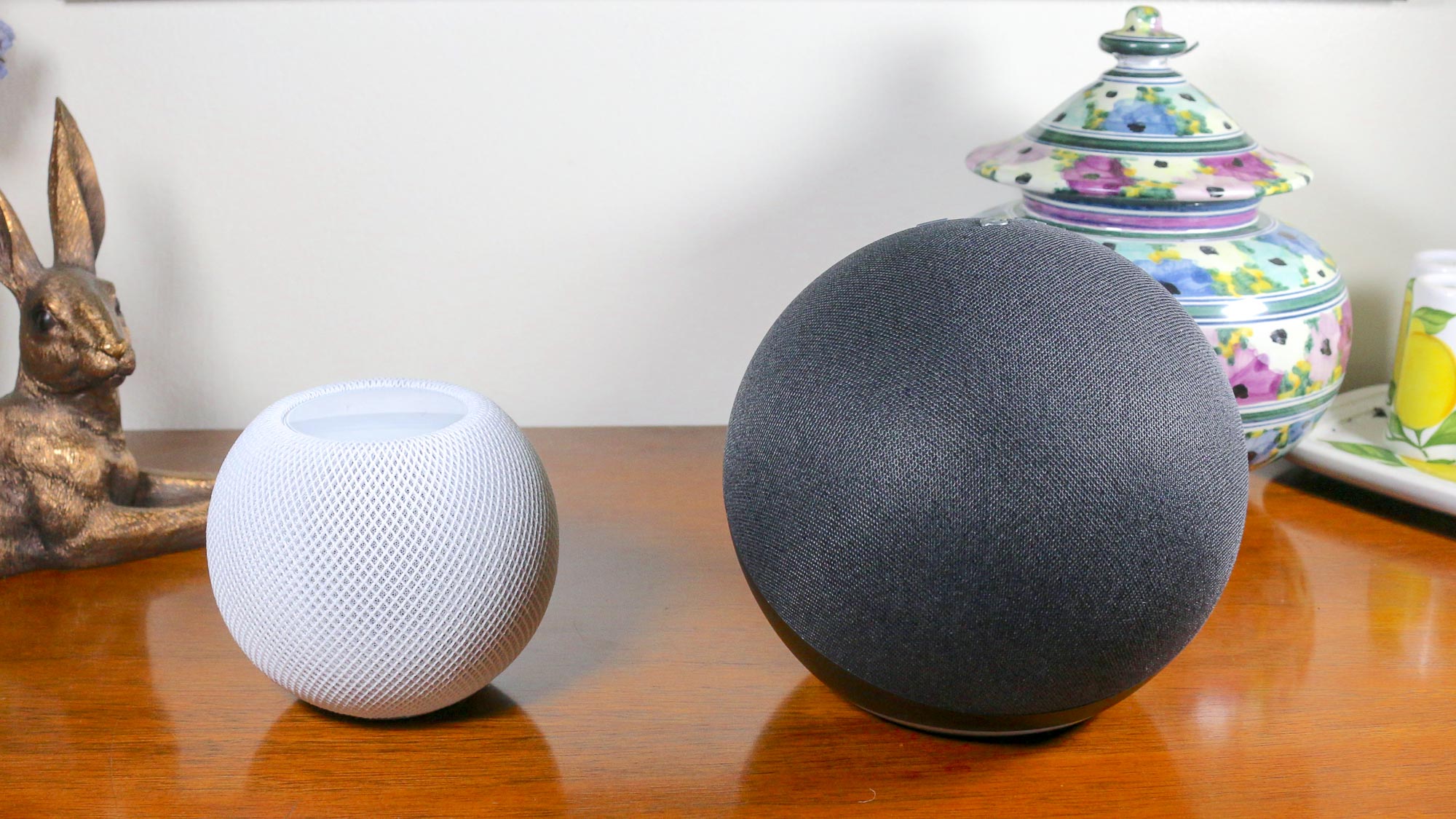
There are no audio ports on the back of the HomePod mini, just a fabric-wrapped USB-C cable. It makes for a seamless look, but presents two issues: If the cable were to break, you’ll have to send the whole thing back to Apple to get repaired. And, because there’s no audio port — as with the Echo — you can’t plug the HomePod mini into an audio source. You can use the HomePod mini as an output for Apple TV 4K, but need to connect them via Airplay.
Apple HomePod mini: Audio performance
Despite its other issues, the HomePod is one of the best-sounding smart speakers around, thanks to its array of seven tweeters, woofer, and ability to adapt its audio automatically based on the acoustics in your room.
The constraints — both physical and financial — of the HomePod mini necessitate some compromises. There’s just one speaker (a full-range driver), but thanks to two passive radiators and an acoustic waveguide, the HomePod mini delivers the best audio I’ve heard in a speaker this size or at this price.
While the mini can’t adapt its audio to the room, it uses computational audio to analyze anything playing, and tweaks the speaker’s output to provide what Apple calls an “optimal listening experience.”
Overall, the listening experience from the HomePod mini was very good, but fell short of the Sonos One as the best-sounding smart speaker. To test the mini, I placed it next to the Amazon Echo, Amazon Echo Dot, and the Sonos One, and streamed the same songs through Spotify.
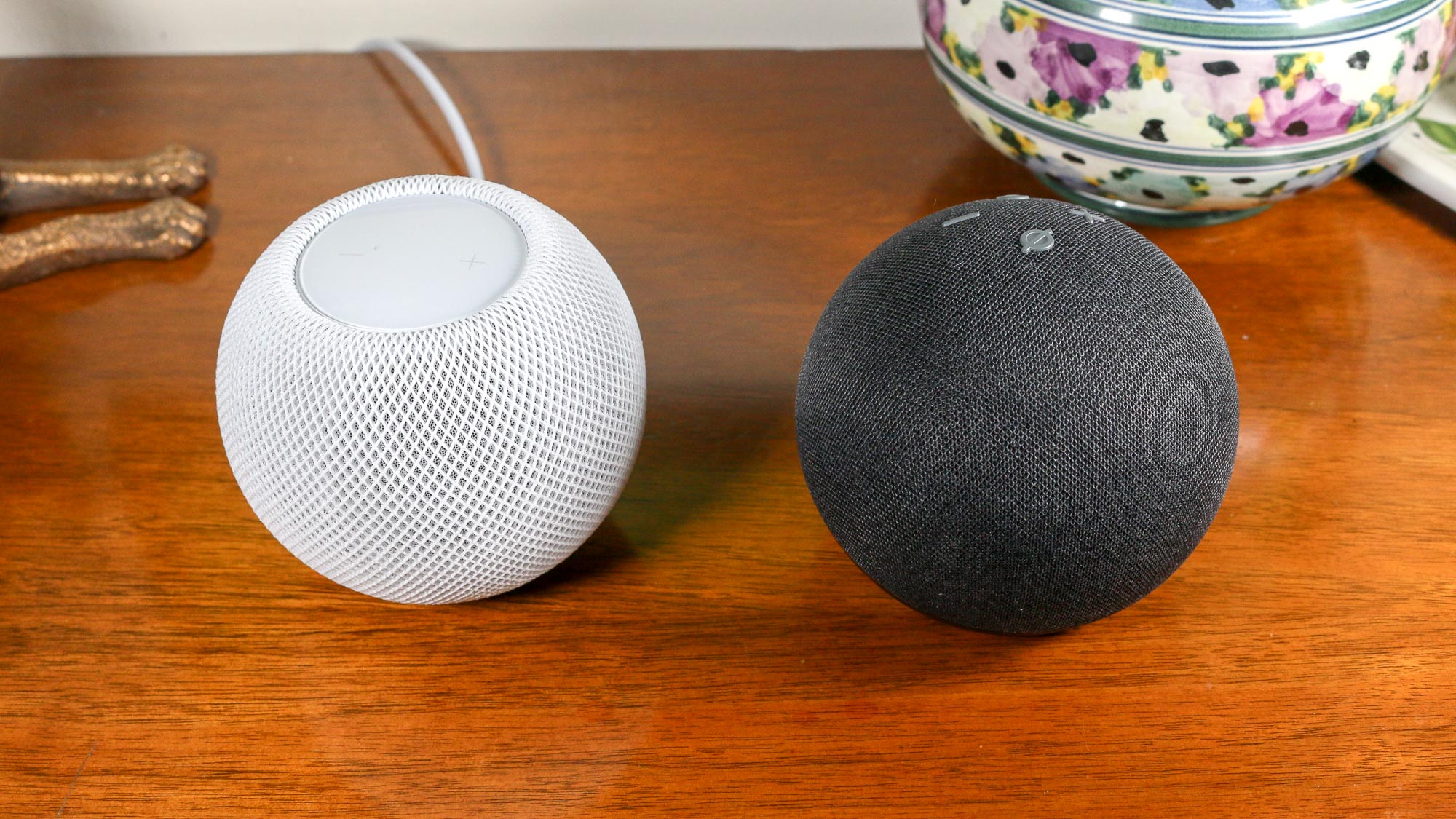
Across multiple genres, the HomePod mini outperformed the Echo, and completely blew the Echo Dot out of the water. When compared to the Echo, the HomePod mini produced clearer vocals and more balanced audio.
Lin Manuel-Miranda’s voice shot through when I played the Hamilton soundtrack; when I switched to the Echo, it just missed the mark — just like Hamilton.
Similarly, Etta James’ voice had more character and soul when I played At Last on the HomePod mini; it didn’t ring out quite so much on the Echo, though Amazon’s speaker had a bit more bass.
The Echo did outperform the mini when playing “Happy: by Pharrell. Vocals were more present, and the bass had more punch. Also, the Echo can get significantly louder than the HomePod mini; it loses a bit of fidelity when pumped up, though.
In all instances, switching from either the HomePod mini or the Echo to the Echo Dot was jarring; Amazon’s $50 speaker was quieter, harsher, and tinnier in all respects. That’s to be expected, though; it’s not designed to be a room-filling party machine, like the Echo or HomePod mini.
My biggest question, though, was how the HomePod mini compared with the Sonos One. I listened to both a single mini and two minis paired for stereo sound, but it made no difference; the Sonos One was clearly the better option. Everything that I played had better-defined vocals, crisp trebles, and smooth, deep bass. But maybe that’s comparing Apples and oranges.
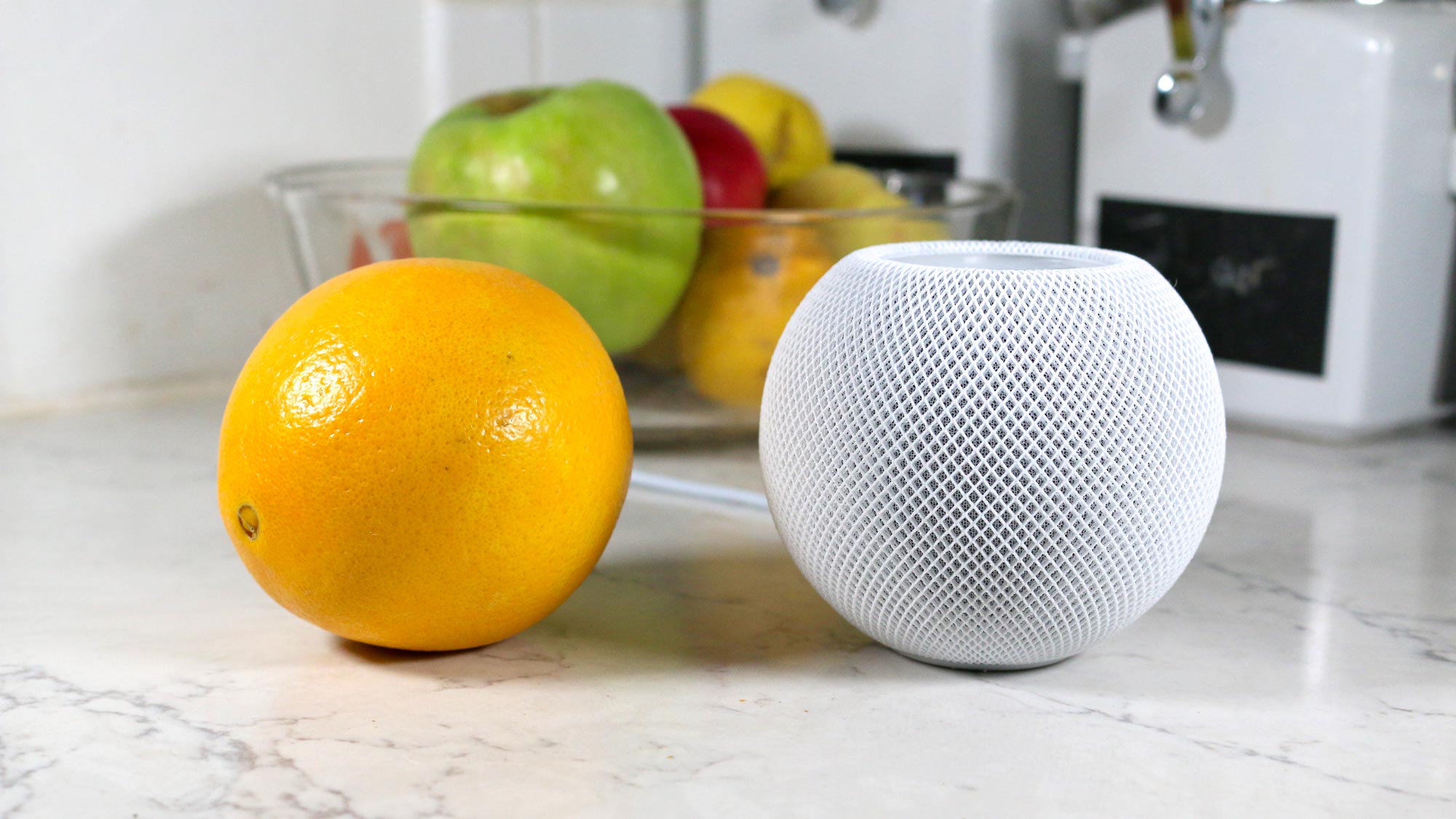
Apple HomePod mini review: Music services
If there’s one area where the mini lags behind other smart speakers, it’s with streaming music services. Through the HomePod, you can stream music from Apple Music, iHeartRadio, TuneIn, and Pandora, but that’s it for now. However, if you don’t have an Apple Music account — or just prefer something else — you can specify a default music service in the Home app.
By comparison, Alexa not only lets you listen to the above services (including Apple Music), but also SiriusXM, Deezer, Tidal, Spotify, and Vevo. And, the Sonos One can connect to dozens upon dozens of streaming sources.
Of course, you can also use Airplay to beam audio from your iOS device to the mini, but it’s not as seamless as asking Siri to do it for you.
Apple HomePod mini review: Siri
We’ve given Siri a lot of flack, and rightfully so. It simply hasn’t kept up with Alexa or Google Assistant. It’s made some improvements — you can now set multiple timers and name them — but it still lacks many skills and features you’ll find on competing virtual assistants.
Siri’s best attribute in relation to the HomePod mini is its integration with your iPhone. You can ask Siri to check your calendar, make a call, send a message, create a new note, and even find your iPhone or Apple Watch. Still, there are a few things here that Alexa and Google Assistant do better.
I asked Siri via the Homepod mini to “search the web for pictures of elephants,” and Siri sent a card to my iPhone with relevant photos. (Interestingly, it used Bing as a search engine). When I tried to perform a similar search on an Amazon Echo and a Google Nest mini, they were unable to complete the action.
Both Siri and Alexa were able to correctly answer the question “what does Hakuna Matata mean,” but Google Assistant was stumped. I then asked all three assistants “Who played third base for the Pirates in 1960?” Siri gave me the most direct — and correct answer: Harry Bright and Don Houk. Google Assistant provided a bunch of other facts from an ESPN article about Houk being traded to the Pirates in 1959. Alexa returned some random information about Willie Stargell.
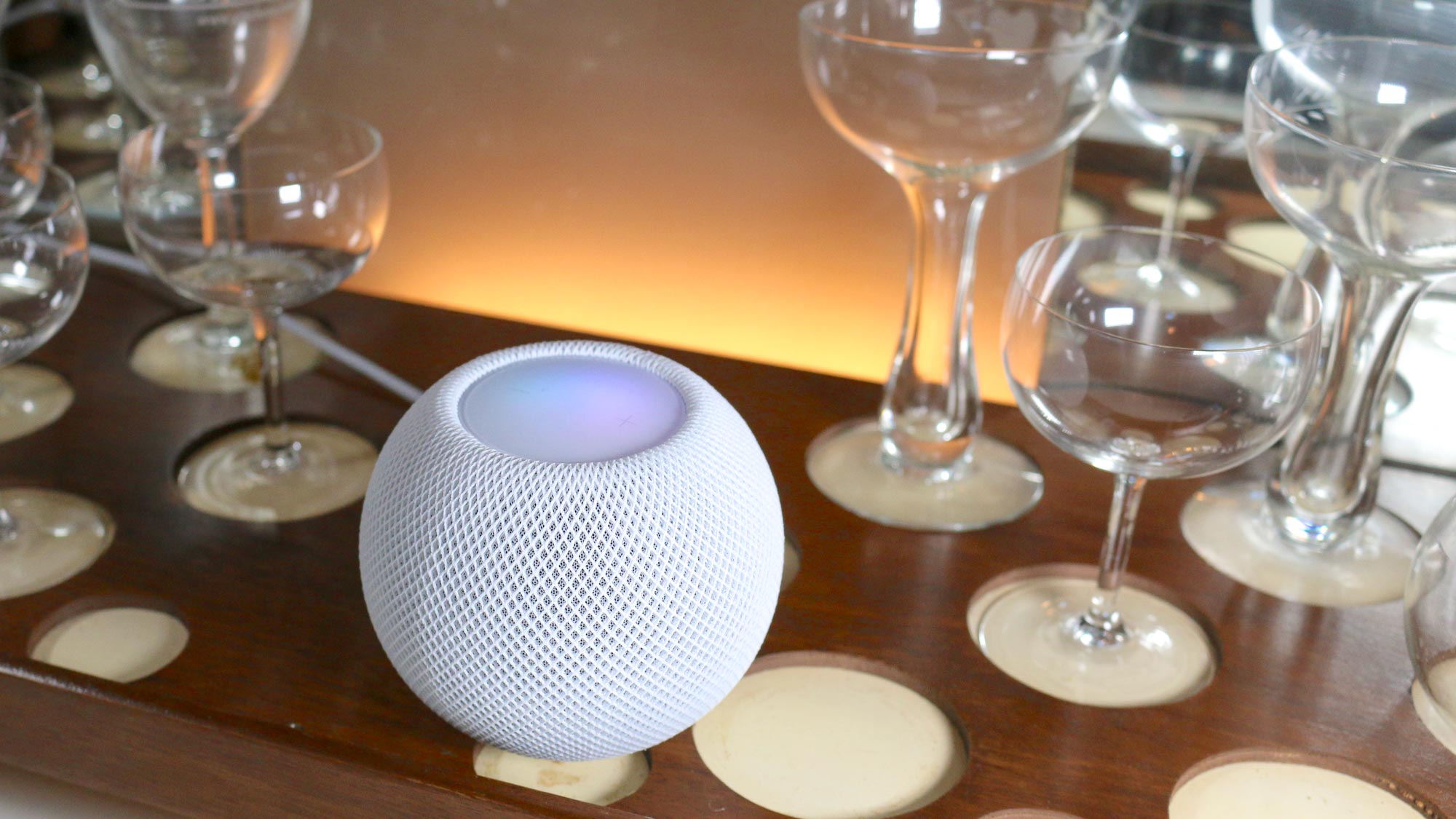
The question “How long has Jeopardy! been on the air” stumped all three assistants. Google simply read the summary on Wikipedia—even asking if I wanted more context—but didn’t give me the total number of years. Alexa thought I was referring to Jeopardy the video game. Alexa responded “according to Wikipedia, it’s 30 minutes.” Not helpful.
When I asked Siri about calendar information, she read what was on my schedule. Google Assistant and Alexa were also able to read me my upcoming appointments. If you want things to be more secure, you can require authentication for personal requests in the Home app, in which case the mini won’t read your calendar, but rather open it on your phone.
When you ask for directions to work, Siri will suggest a route, and send you a suggestion in Apple Maps; I wish it would cause Maps to open as well. However, Google Assistant not only popped a card on my iPhone, but it gave me options for different modes of transportation.
I then asked the three assistants to “Order a pizza.” Both Siri and Google Assistant returned a list of pizza places near me. Siri read off a list of joints starting with the one nearest my location. Google Assistant led off with the highest-rated, and also sent a card to my iPhone showing it and other options on a map. Alexa asked if I wanted to enable the Domino’s pizza skill.
While you can set up the HomePod mini to recognize personal requests for up to six people, they all need to have an iPhone. Both Alexa and Google Assistant are platform-agnostic, so it’s easier to set up accounts.
Because the HomePod mini requires you to have an iPhone, there’s no way to set up an account for your kid and have it deliver child-safe results, as you can with Amazon Echo smart speakers. It also lacks such Amazon features as Kids+ (FreeTime), which has tons of child-friendly content and lets you monitor what they’re doing. You can block explicit lyrics from individual HomePod minis, though.
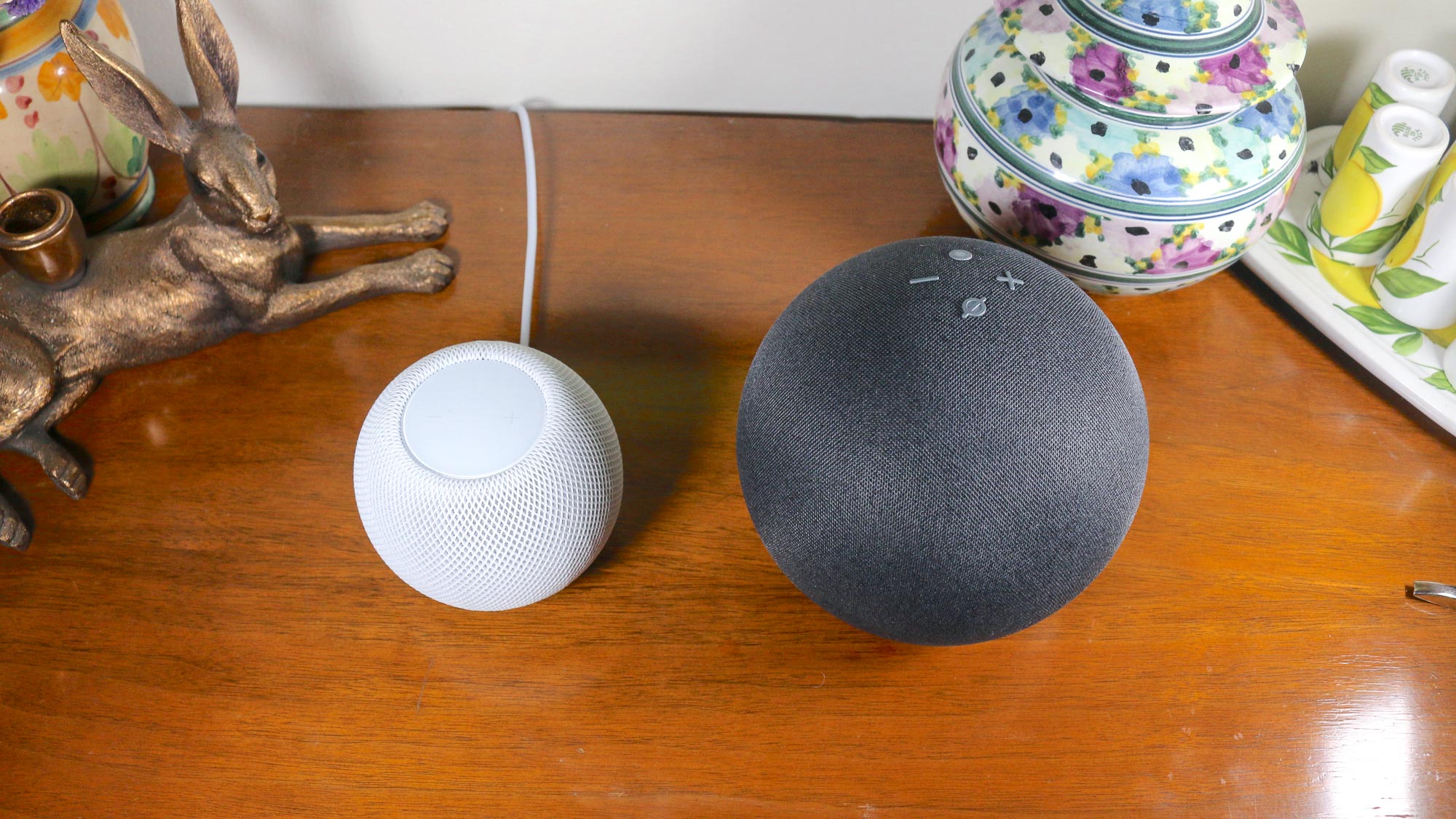
Apple HomePod mini review: Smart Home features
You may not realize this, but Apple’s HomeKit is a sneakily good smart home platform, second only to Alexa. That’s because as with Alexa, you can create some pretty sophisticated automations, which will trigger your smart home devices based on a variety of inputs.
For example, you can have your smart lights turn on at a certain time of day, when people leave or arrive, a sensor is tripped, or one of your other smart devices turns on or off. Alexa’s Routines are a bit more sophisticated, as they not only let you control smart home devices, but can also do such things as read your email summaries, send a notification, and more. You can even program in a delay as to when you want an action to occur. Still, HomeKit is much better than Google Assistant when it comes to smart home automations.
One of the features I like best about Apple products is the Handoff feature; get a call, but your phone is in the other room? You can pick it up on your iPad, Mac, or Apple Watch, and now, your HomePod mini. Conversely, you can also ask Siri to place a call through the HomePod mini. And, if you’ve started a call on one device, you can Hand it off to another device.
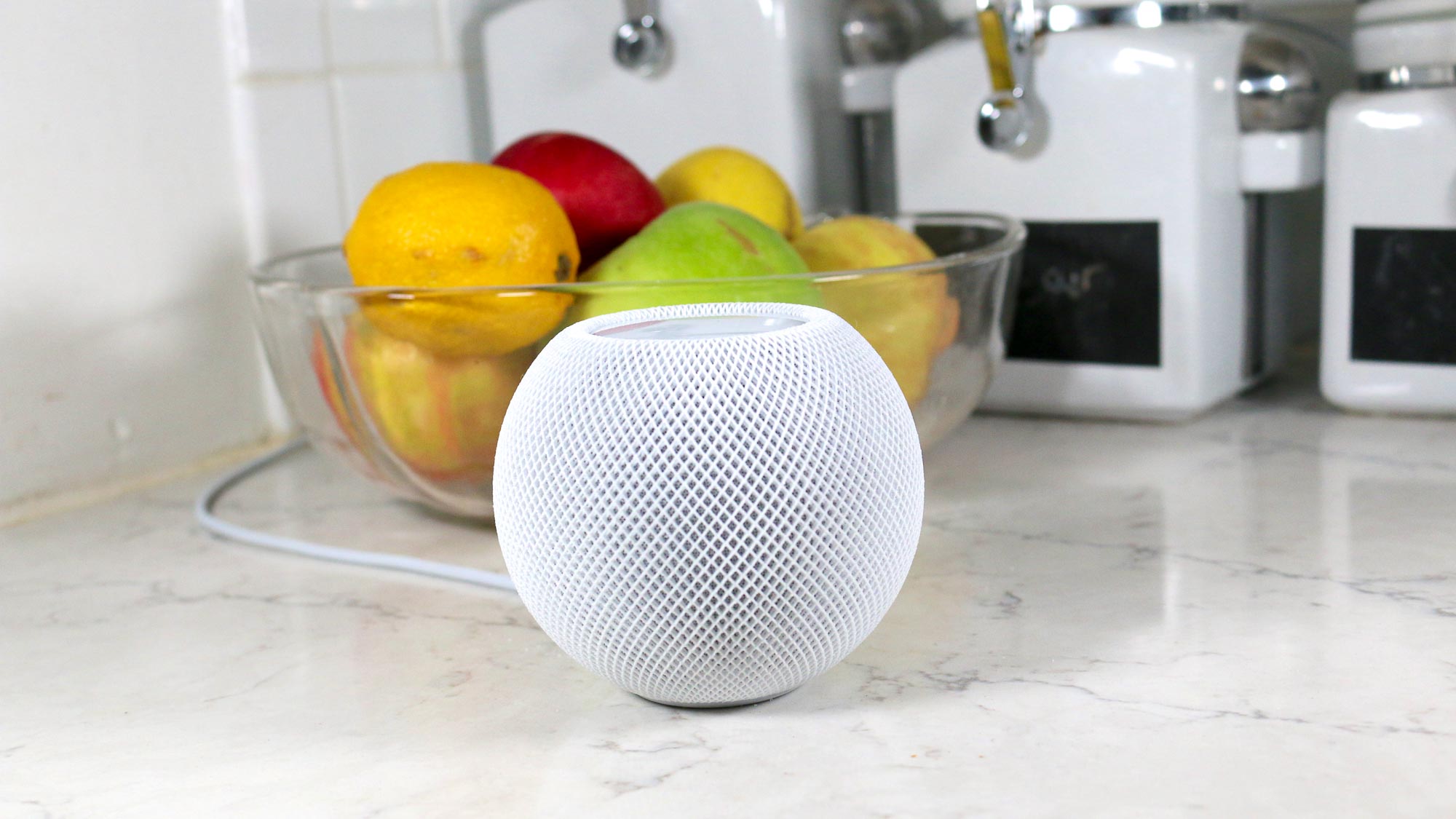
Similar to Amazon’s Drop-In, you can use the HomePod mini’s Intercom feature to send audio messages to other HomePod devices as well as iPhones, iPads, Apple Watch, CarPlay. When you say “Siri, intercom ‘x’,” Apple’s assistant will make a recording of the phrase you say and deliver it to the device you want.
It works well, but it’s less advanced than Drop-In, which allows you to have what’s called full-duplex audio; that is, you can both hear and talk to the other person, like a regular phone call. With the HomePod mini, you’re essentially making and receiving recorded messages.
Apart from Bluetooth and Wi-Fi, the HomePod mini also has Thread networking built in. This newish protocol is designed for low-power smart home devices to communicate with each other over longer distances, but despite support from both Apple and Google, it’s been slow to take off. While Thread is built into the Nest Hub Max, it’s not in the Nest Audio, Google’s newest $99 smart home speaker.
So, similar to the Amazon Echo, the HomePod mini can be used as a smart home hub, letting you connect devices, such as smart locks, to your home network.
Apple HomePod mini review: Verdict
It’s funny how timing works. Like the releases of Amageddon and Deep Impact, it’s pure coincidence that both Apple and Amazon launched spherical smart speakers within months of each other. And like those movies, the Echo and the HomePod mini will be sure to leave a $99 crater in consumers’ wallets.
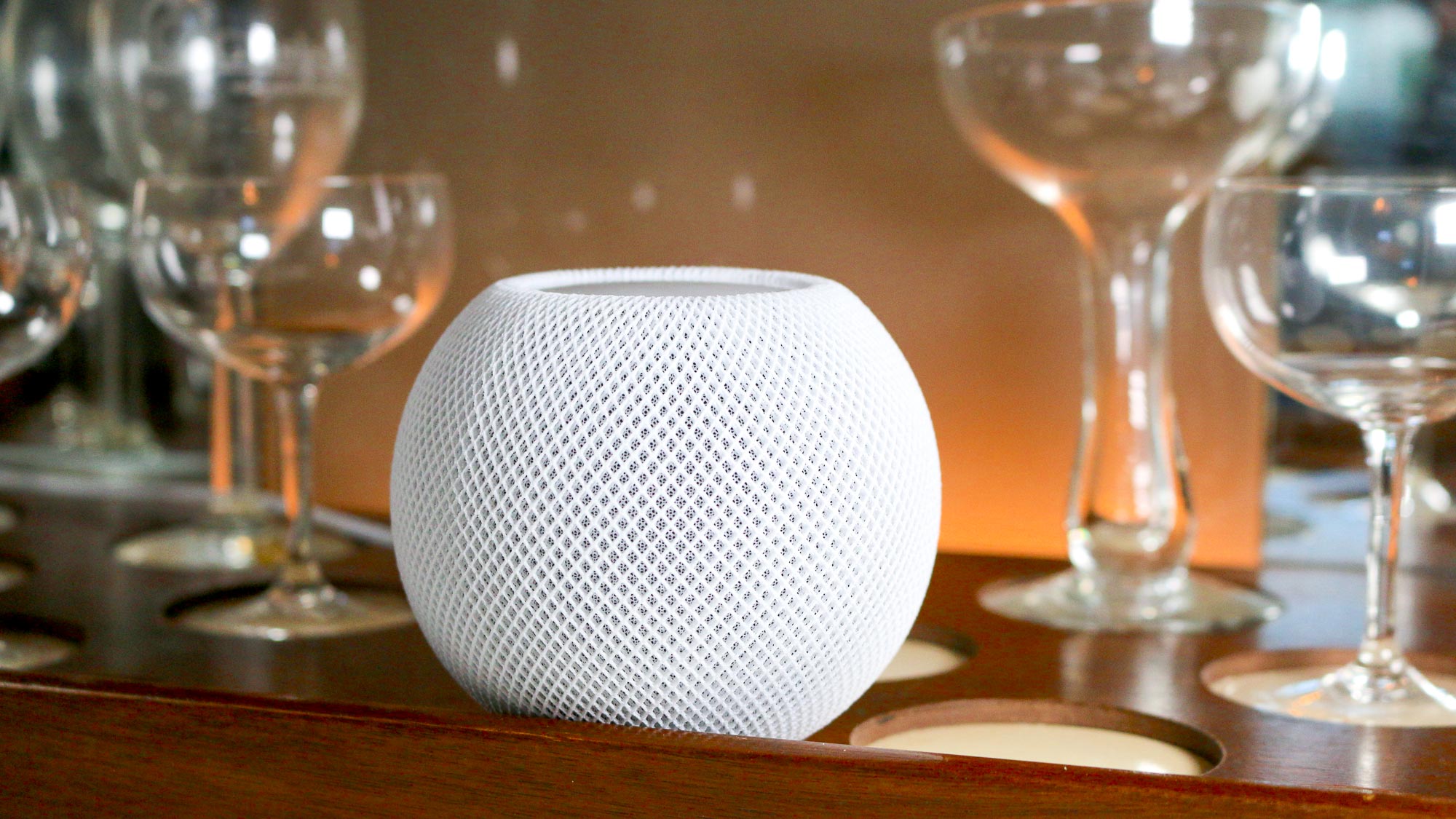
The mini sounds great for its size, and will certainly attract many more buyers than the $299 HomePod did. The HomePod mini also integrates well with your iPhone and other products in the Apple ecosystem. However, while I like HomeKit as a smart home platform, I’m still less impressed with Siri overall as a voice assistant. And I really wish the HomePod mini had support for Spotify. But Apple fans who have been looking longingly at Amazon and Google’s budget smart speakers finally have a device to call their own.
For all the latest Technology News Click Here
For the latest news and updates, follow us on Google News.
